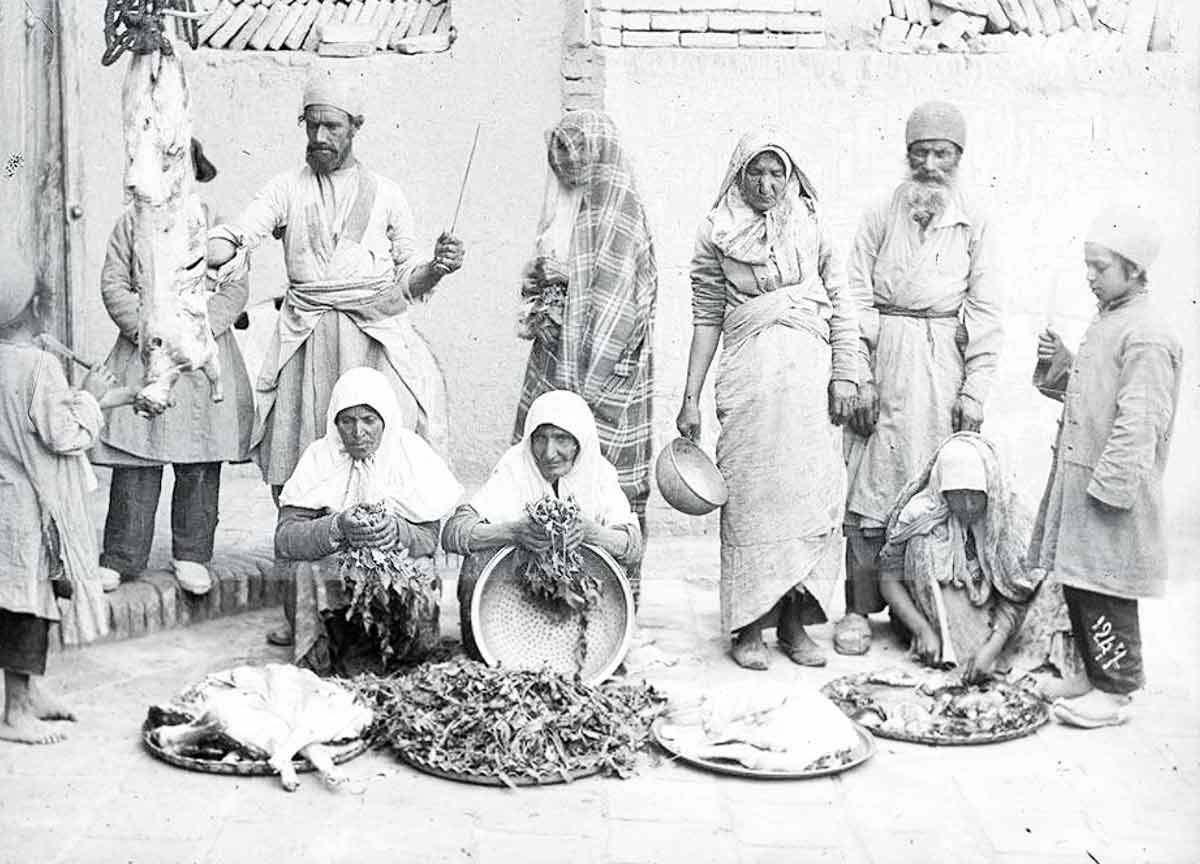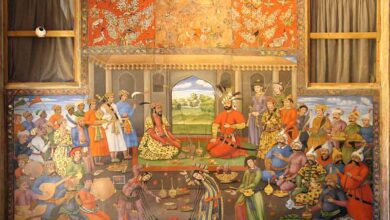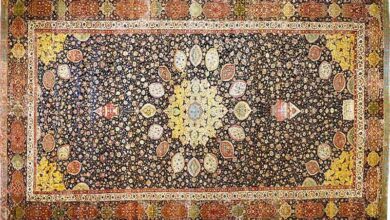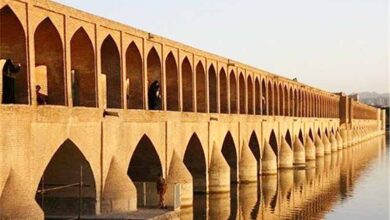Yesterday’s photos for today, today’s photos for tomorrow

Alireza Karimi Saremi: In the current turmoil of the past centuries and the history of the rise and fall of Iran, the earth has sometimes been sparks of hope and sometimes gloom and despair. During the last century, many books have been written about the history of this region.
Historians and scholars have tried to make things about the days based on the circumstances of their time, so that today they know and believe in what has passed away. But 21st-century humans are the humans of the virtual world and digital technologies who expect more than ever before. They won’t believe it until they see it. There is a common proverb in Persian culture, which is based on one of the verses of the sixth century AH, Atar of Nishaburi: Zuleikha Telling and Joseph Hear/Hearing, who was like seeing.
By paying tribute to historians, it should be noted that in today’s world, describing or defining events that have occurred in the past cannot be considered as much as human attention. We live in a time when the world around us is capturing images.
In June 2021, a company called Rise Above Research in Massachusetts, USA, which conducts digital imaging industry research for the global market, reported that the approximate number of images taken in 2020 was more than one trillion and two hundred billion frames. Is. This means that if a person takes one photo per second, it will take more than 45,544 years to photograph the number of photos taken by humans in 2020. Of course, this statistic is astonishing considering the prevalence of coronavirus worldwide and the restrictions imposed and the widespread closure of entertainment centers and the absence of people in tourist centers.
Now, considering these numbers and the presence of photos in human life today, how can it be ignored? Visual documents in the last century has always been one of the important research and analytical tools in revealing social events. The reason for this claim is the murals and inscriptions left in the magnificent palaces of the ancestors, which have left a visual and documentary description with the powerful hands of the painters and stonemasons of the time for the knowledge of the future.
With the invention of photography in the early nineteenth century, photography found a special place in the documentation of the world, because with its special capabilities, it recorded parts of the time of that time. Perhaps this was the reason why this industry entered the court of Mohammad Shah Qajar three years after the emergence of photography in France, and Iran also benefited from this emerging phenomenon at the same time as the modern world.
Undoubtedly, the promotion of the principles of photography and special attention to the teaching of this art was ordered by Nasser al-Din Shah Qajar, who marked a new chapter in the recording of the visual history of Iran. 180 years ago, he cleverly realized that the new art of photography, like the news and documentary media, could help run the monarchy and give him insights from all over Iran. The presentation of the Persepolis photography project to the French Jules Richard and then the completion of this project by the Italian Luigi Pesce and the commemoration of those unique images for the history of Iran by the king who was only nineteen years old, is a sign of progressive foresight and commendable foresight. It has Iran for today.
Nasser al-Din Shah realized that the language of images is much more powerful than words. Therefore, it has seriously used photography as a practical tool for examining matters as well as for recording in history. The first video reports were prepared by Agha Reza Akasbashi on his orders, from the Shah’s travels and camps to the countryside around Tehran and Naser al-Din Shah’s long trips to various parts of Iran. It is worth mentioning that if it were not for his interest and leaving more than forty thousand photo frames in the album of Golestan Palace House, today, researchers and scholars could not have presented acceptable research to the present generation without these visual documents.
In 1925, the Qajar dynasty gave way to the Pahlavi dynasty and Reza Shah ascended the throne. The usual trend of photography in the Qajar period continued with more intensity at this time and the functions of photography underwent fundamental changes to advance the affairs of Iran. Around the same year, the Civil Registration Organization was formed, and individuals were required to obtain a birth certificate along with a 4×6 photograph. Now, due to the social origin of photography and its official entry into the social life of Iranians, it was necessary to establish many photography studios throughout Iran.
Due to the generalization of photography and its official entry into society, taking souvenir photos, as well as being illustrated in newspapers and magazines, brought a special charm to the people. The boom in photography and the advent of new cameras were able to open up new avenues for press photography at the time. From the time of Dr. Mohammad Mossadegh as prime minister and the nationalization of the oil industry, until the coup d’état of August 19, 1943 and the return of Mohammad Reza Pahlavi to Iran and the inflammatory social situation of that time, many photographs have been left. Since then, many important events have been photographed by news or amateur photographers. Undoubtedly, every piece of photographs taken and available in the visual history of Iran is a testament to the reality that has passed over this land. Because by looking at them, we will discover facts that written documents may not convey such a feeling.
The outbreak of the Islamic Revolution in 1978 and then the Eight-Year War in 1980, the production of millions of photo frames of the ups and downs of a great nation in front of the eyes of the future, which in terms of documentation and definition of reality removed any doubt. The fact that the photo is in front of our eyes is undeniable. Although in the digital age, it is always possible to enter and capture and change reality, in this case, photo-realism is considered as an undeniable document.
“In my opinion, you can’t claim to have actually seen it until you take pictures of something,” says Émile Zola, an influential French writer and the most important figure in the school of literary realism.
Helmut Gernsheim, a famous German photographer, said: “Photography is the only “language” understood everywhere in the world, bridges nations and cultures and binds the human family together. Photography with all sincerity and free from political influence and influence, where people are free, reflects life and events, allows us to share the sadness and happiness of others and clarifies the social and political situation. We become eyewitnesses to the human and inhumane aspects of humankind … ”
Today, the presence of a photographer and the intervention of the camera give us an understanding of the situation. The constant presence of cameras instills us that time involves interesting events, events worth taking pictures of. This makes it easy to accept that whatever happened once and in whatever moral form it has, let it evolve so that something else can be presented to the world, that is, a picture of it.
“If we want to return the photo to its core context of experience, social experience and social memory, we must respect the rules of memory. We need to put the printed photo in a position to bring something of astonishing certainty and what it is.
What introducing German writer Bertolt Brecht wrote about acting in one of his poems applies to such an act. Instead of the moment, you can sing photography, and instead of acting you can be singing the re-creation of the platform:
So you have to just reveal the moment /Photography, without hiding in this journey / The origin of this moment [photography] revealed / to the actor [re-creation of the substrate] / Sequence and tassel section / What you have accepted to the finalizer / This way / You will show that the flow of events and the course of your work / and the spectator will experience this now at many levels / that comes before and / in the next and will be merged He will find / Much now/ Now, he will not just / in your theater / who also sits in the world.”
We should consider photographs as an indelible memory of a nation’s socio-political experience, and we always value it, even if it reveals the weaknesses and carelessness of the time and we do not like it. What is important is that the photographs taken today are for the future to judge us today with visual documents. Just as we consider the images of past centuries to be reliable documents and we judge the time of yesterday today. With such an idea, photographers are the visual historians of their time, and neglecting and marginalizing them will help to distort the history of a nation, which is a great and unforgivable betrayal.









